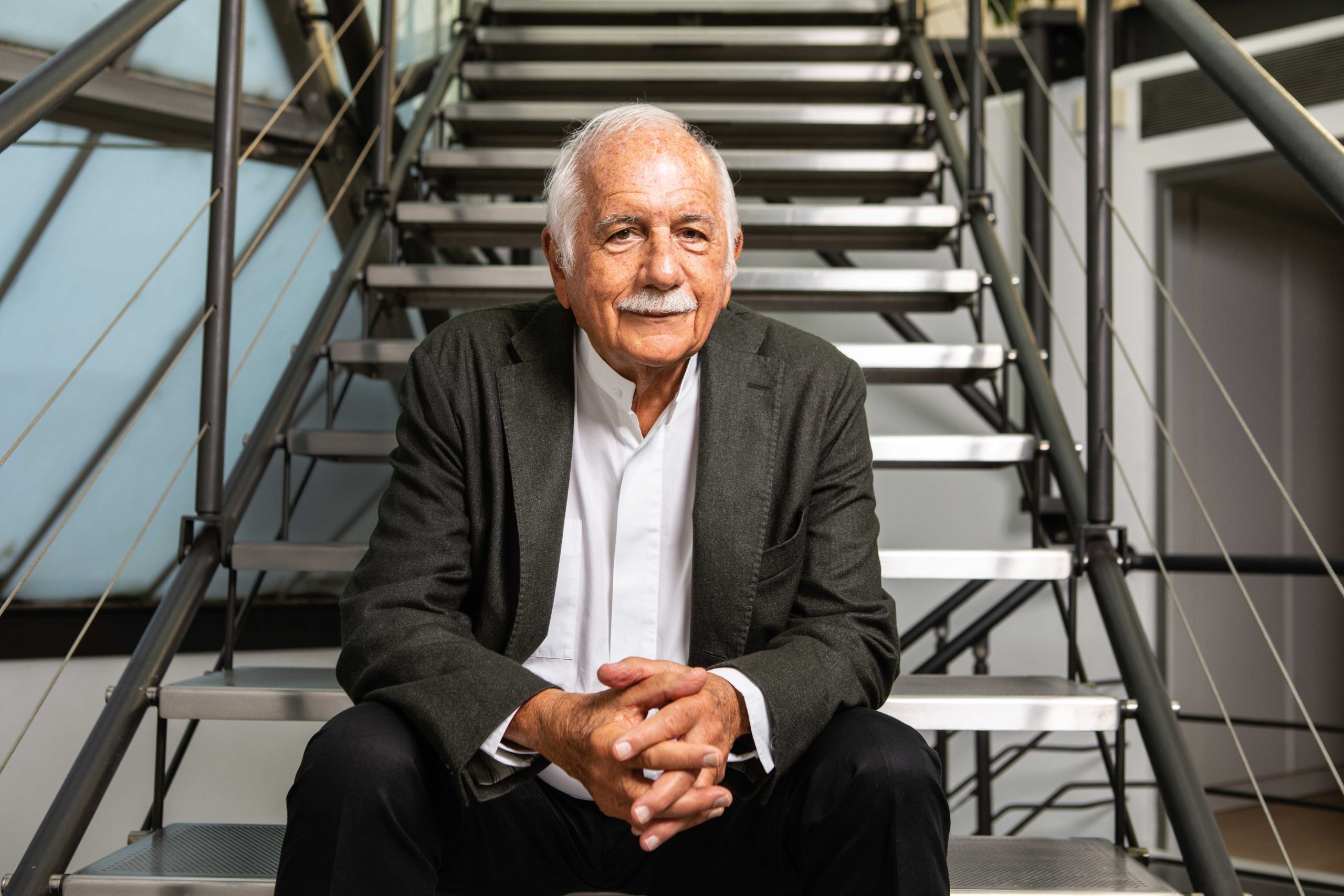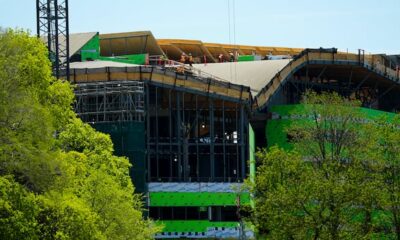Lifestyle
Architect Moshe Safdie Explores Design’s Role in Community Cohesion

Prominent architect Moshe Safdie recently engaged in a conversation about the role of architecture in fostering community, particularly through Jewish aesthetics. His career, which took off with the groundbreaking Habitat 67 housing complex showcased at the World Expo in Montreal, has seen him design iconic structures such as the National Gallery of Canada in Ottawa and Marina Bay Sands in Singapore.
During a recent interview, Safdie reflected on his extensive work in Israel, emphasizing the importance of light and design in public spaces. He noted that architects have a critical role in creating environments conducive to cohabitation and collaboration, particularly in polarized societies.
Mamilla district in Jerusalem serves as a prime example of this philosophy. Designed by Safdie in the early 1970s, it took over four decades to fully materialize as a vibrant shopping area bridging the historical divide between the old and new city. Safdie believes that while architects can shape physical spaces, the ultimate success of these interventions relies heavily on supportive policies established by government leaders.
“Architects can create the physical setting to improve cohabitation,” Safdie stated. He underscored the need for architects to understand the various forces at play in urban environments, such as population movement and security perceptions. His recent work in Singapore highlights this approach, where the government has successfully mixed communities of diverse ethnic backgrounds to promote social cohesion.
Reflecting on whether Mamilla fulfilled its intended purpose, Safdie expressed confidence in its success. He described it as a lively space that attracts a diverse array of visitors, including Orthodox Jews, secular residents, and tourists. The area has become a melting pot of cultures, fostering interaction among different groups, including Arab residents who frequent the shops.
The architect also addressed the challenges of aesthetic standards within the Jewish community. He referenced Jewish theologian Michael Wyschogrod, who criticized the lack of individuality and taste in Jewish architecture, arguing that this trend could lead to a stagnation of cultural vibrancy. Safdie echoed these sentiments, highlighting the hesitance among some Jewish institutions to invest in high-quality architectural designs.
He pointed to the Skirball Cultural Center in Los Angeles as a notable exception, demonstrating that, with the right vision, significant contributions to Jewish architecture can be made. Safdie lamented the lack of pride in aesthetic quality within the community, particularly evident in recent synagogues and public buildings in Israel.
The conversation shifted to the role of education in fostering an appreciation for architecture, particularly among younger generations. Safdie noted that while the arts are underrepresented in Israeli schools, there is no shortage of talent and creativity among Jewish architects when given the opportunity.
He also likened the Habitat 67 complex to an urban kibbutz, emphasizing its communal atmosphere. Safdie emphasized that successful projects emerge from a collaborative dialogue with clients, where understanding the site’s context—including climate, culture, and community—plays a vital role in the design process.
While discussing elements of synagogue architecture, Safdie reflected on a recent visit to Notre-Dame in Paris. He admired the building’s use of light and the interplay of structural elements, drawing parallels to how synagogues can harness light to evoke a spiritual experience.
As he approaches his 87th birthday, Safdie remarked on the introspection that comes with age. He noted that he has grown more appreciative of his contributions to architecture, allowing him to approach the field with a more open mindset.
In an era marked by division, Safdie’s insights underscore the potential of architecture to bridge gaps and foster community connection through thoughtful design.
-

 Politics4 weeks ago
Politics4 weeks agoSecwepemc First Nation Seeks Aboriginal Title Over Kamloops Area
-

 World5 months ago
World5 months agoScientists Unearth Ancient Antarctic Ice to Unlock Climate Secrets
-

 Entertainment5 months ago
Entertainment5 months agoTrump and McCormick to Announce $70 Billion Energy Investments
-

 Science5 months ago
Science5 months agoFour Astronauts Return to Earth After International Space Station Mission
-

 Lifestyle5 months ago
Lifestyle5 months agoTransLink Launches Food Truck Program to Boost Revenue in Vancouver
-

 Technology3 months ago
Technology3 months agoApple Notes Enhances Functionality with Markdown Support in macOS 26
-

 Lifestyle3 months ago
Lifestyle3 months agoManitoba’s Burger Champion Shines Again Amid Dining Innovations
-

 Top Stories2 months ago
Top Stories2 months agoUrgent Update: Fatal Crash on Highway 99 Claims Life of Pitt Meadows Man
-

 Politics4 months ago
Politics4 months agoUkrainian Tennis Star Elina Svitolina Faces Death Threats Online
-

 Sports5 months ago
Sports5 months agoSearch Underway for Missing Hunter Amid Hokkaido Bear Emergency
-

 Politics5 months ago
Politics5 months agoCarney Engages First Nations Leaders at Development Law Summit
-

 Technology5 months ago
Technology5 months agoFrosthaven Launches Early Access on July 31, 2025





















